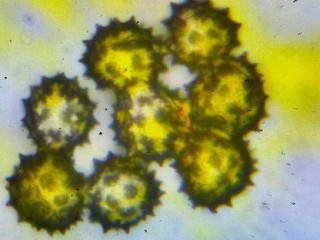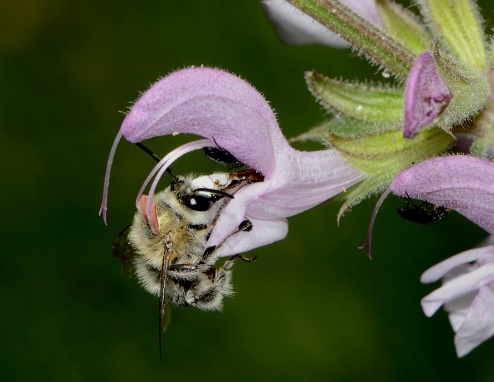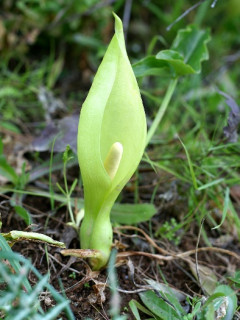Step 2: The insect lands on the plant
Once the insect is attracted, how can it be forced to carry the pollen? By relying solely on the insect's hairiness or by deploying complex mechanisms, plants have more than one trick up their sleeve!
Pollen sticky
Once attracted to a flower, the insect lands on it and feeds. Pollen is then deposited on the flower, which the insect will carry to the next flower it visits. If these two flowers are of the same species, pollination can take place and later a fruit and seed can be formed. Despite the often rapid movements of the pollinating insects, the pollen is deposited on their hairs because of their generally bristly shape and sticky texture.
The stamens, from which the pollen grains originate, are often placed in such a way that the insect is forced to rub against them, and thus carry the pollen. The grains are usually deposited on the underside of the abdomen and on the thorax, but can also be deposited on the legs.r, et donc de transporter le pollen. Les grains sont généralement déposés sur la face inférieure de l'abdomen et sur le thorax, mais peuvent également être déposés sur les pattes.
Elaborate mechanisms
Some flowers have shapes or mechanisms that help insects to deposit pollen. Sage has rocking stamens; when the insect lands on the flower, it presses a kind of small pedal, which causes the stamens to rock and rub against the insect's back, depositing pollen. When the insect lands on another flower, it carries the pollen from its back to the stigma.
Plant prisons
Some plants use even more special mechanisms to be pollinated. This is the case with the Italian Arum, which is pollinated by flies. To attract pollinators, the Arum emits heat and a strong smell of dung. The flies land on the flower and fall into a chamber from which they cannot leave. During the night they try to escape from the chamber and bump into the male part of the flower and its pollen. The next day, once they are covered with pollen, an opening is created in the plant, allowing the flies ... to be trapped by a new flower and to deposit the pollen on the female part of the flower!
The other stages of pollination :



